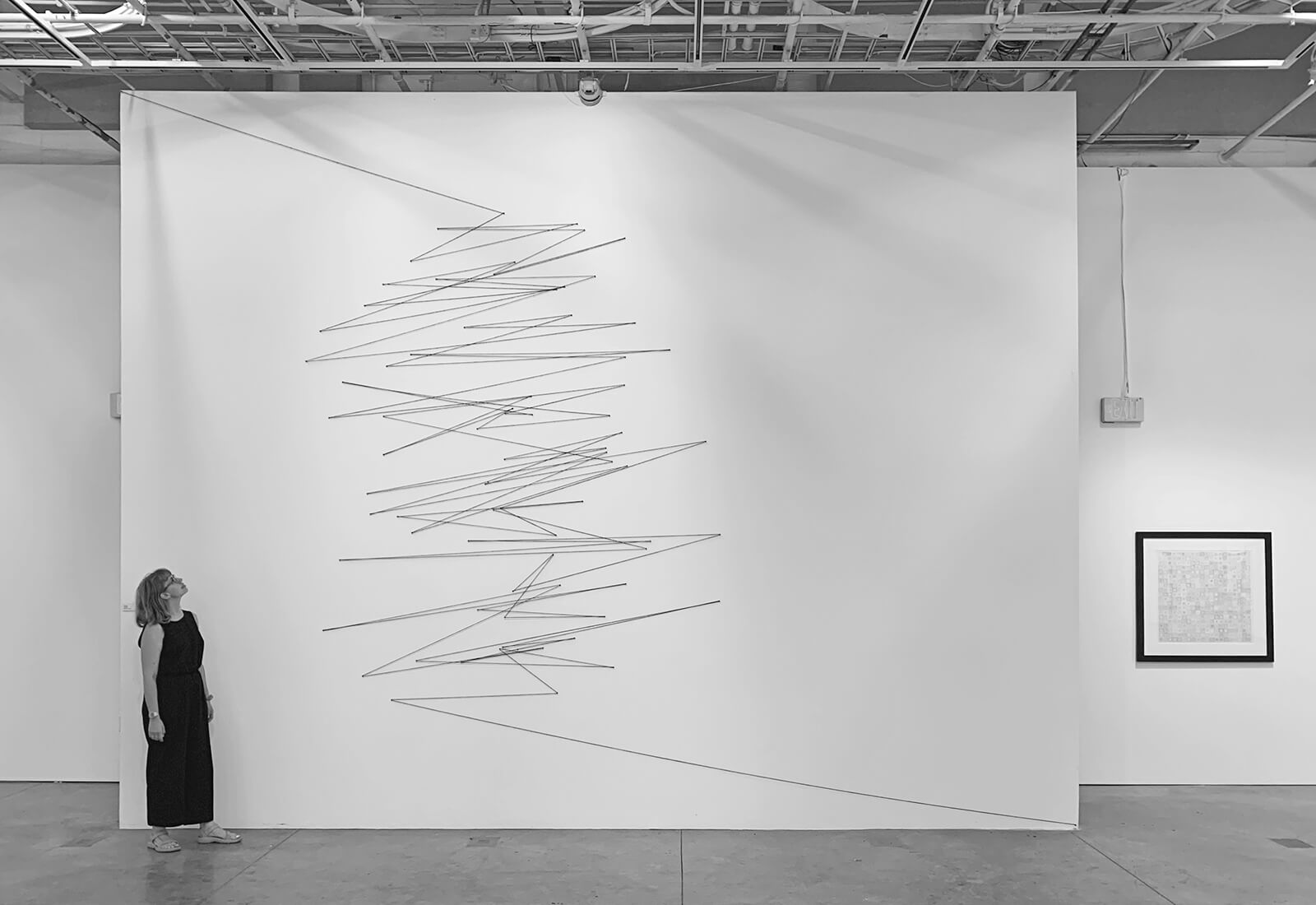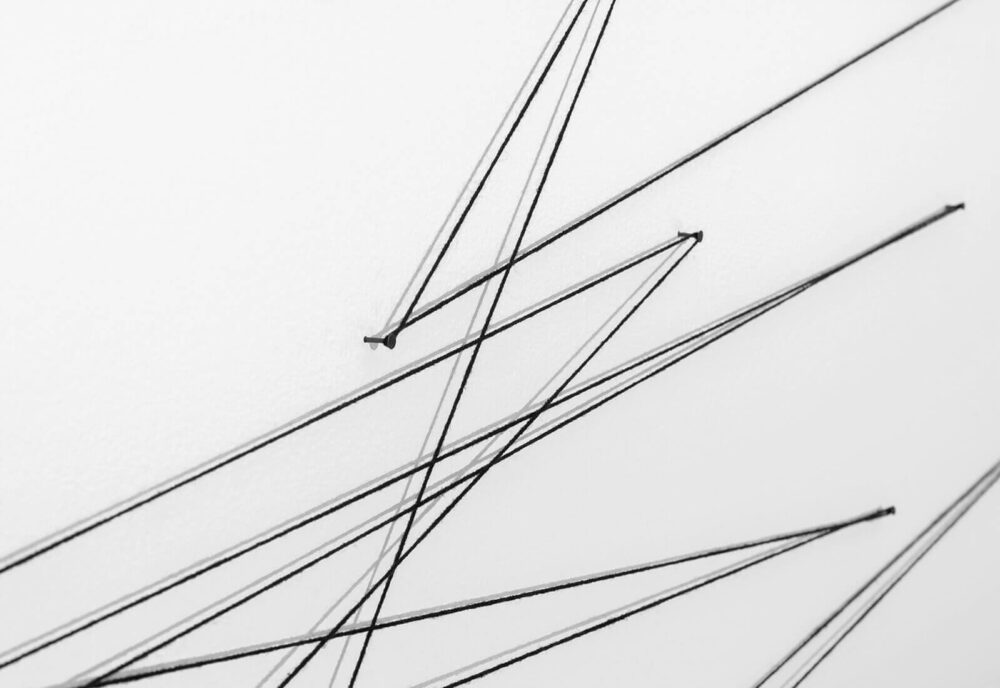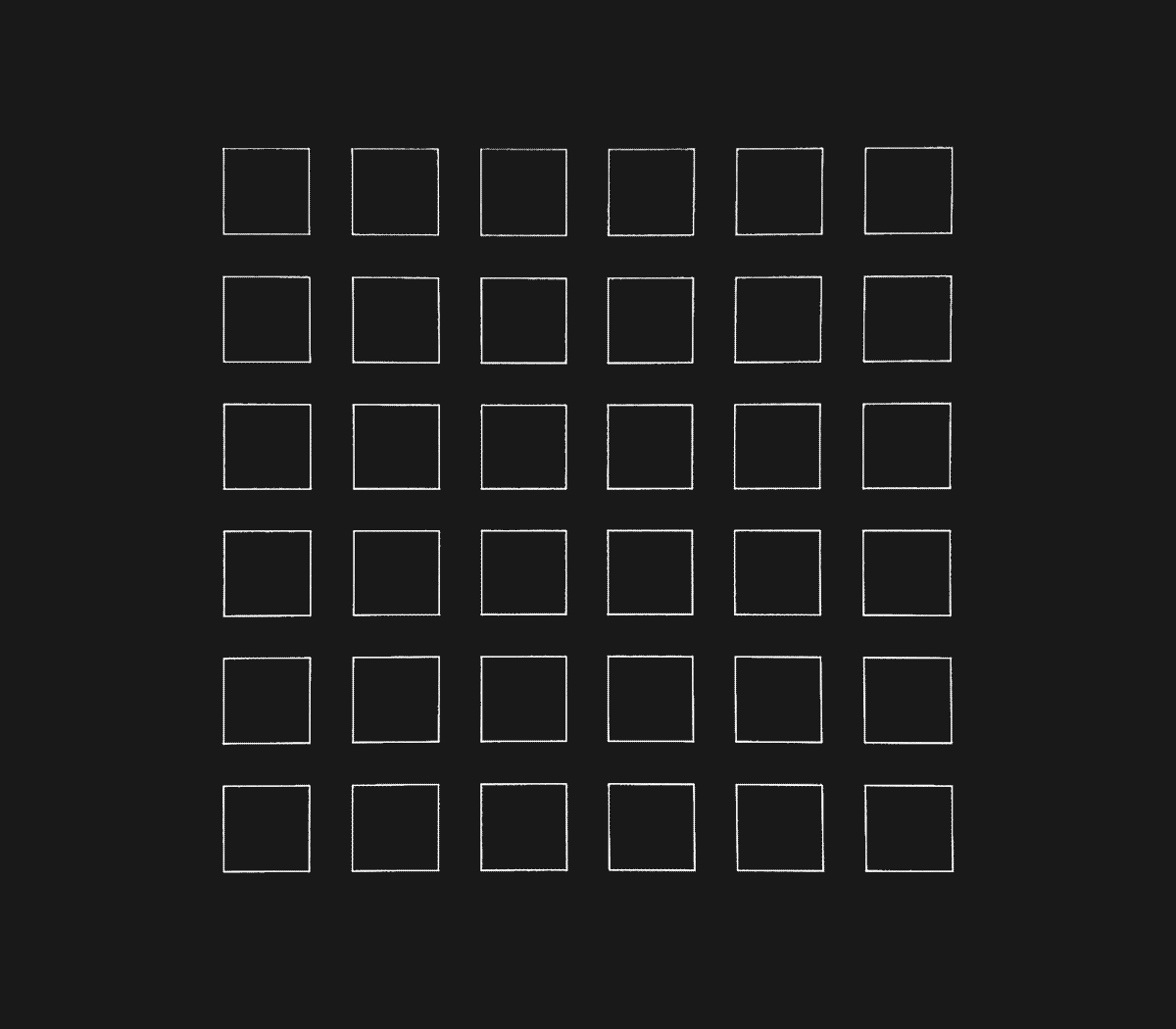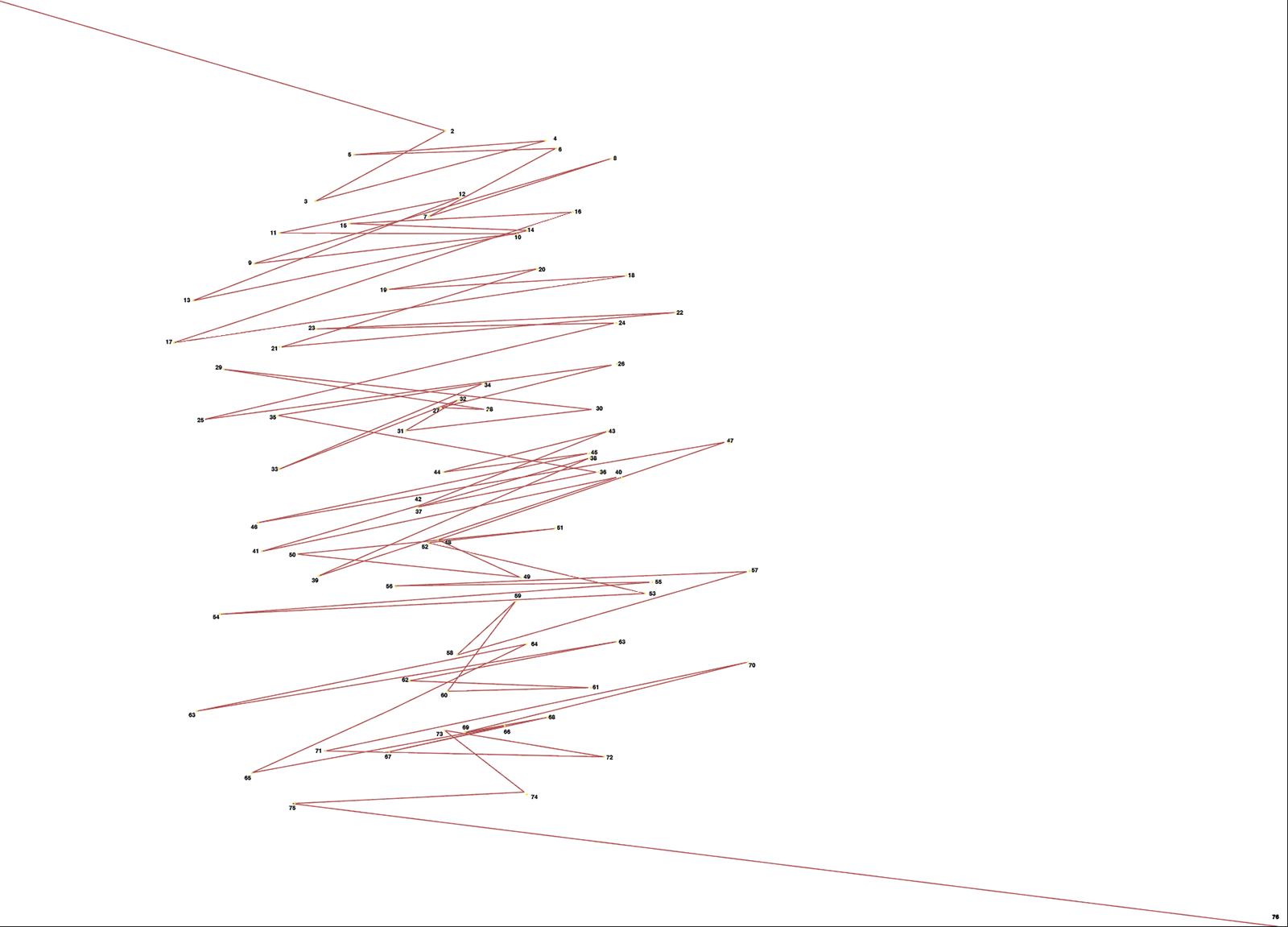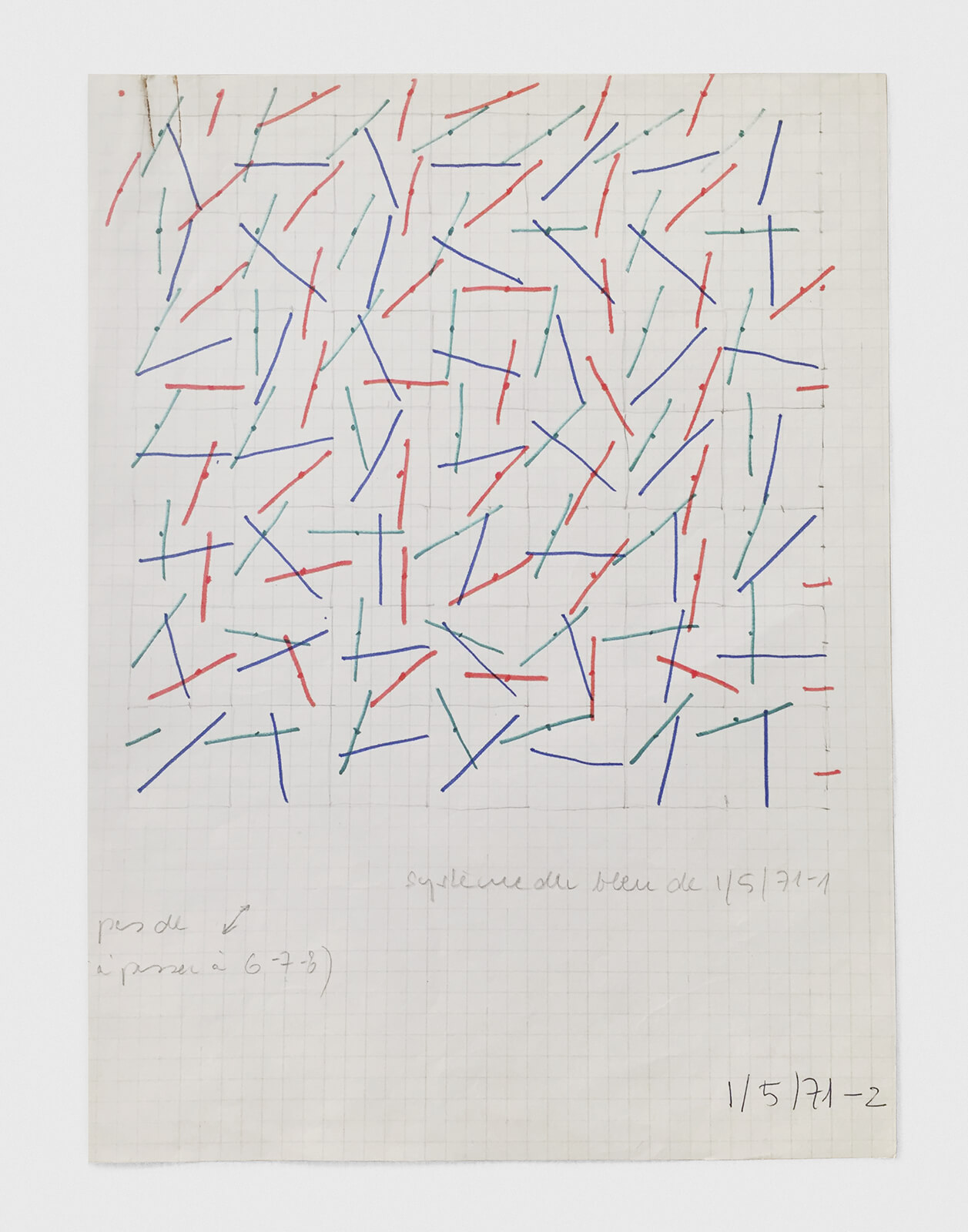Variations: Déscente (2013)
On View: Déscente (2013)
“Unlike the intimate scale of Molnar’s works on paper, Déscente is larger than life, twenty feet wide and sixteen high.”
“Unlike the intimate scale of Molnar’s works on paper, Déscente is larger than life, twenty feet wide and sixteen high.”
Vera Molnar, Déscente, 2013, Wool string and nails, 6 x 4.8 meters / installation view: Beall Center for Art + Technology / photo: David Familian
“As I follow the string with my eyes, I feel my pen moving in my hand, tracing a line in the air. It’s a continuous line, a theme in Molnar’s work since her earliest ventures into abstraction.”
In many ways, the exhibition “Variations” is a bookend to “Transformations”—both solo shows at university gallery spaces in Anglophone countries, though 46 years and over 5,000 miles apart. Both focus on her works on paper and her experiments with computers.
The centerpiece of “Variations” is an installation titled Déscente that was previously shown at the Museum for Concrete Art (MKK) in Ingolstadt, Germany, altered ever so slightly to fit the central wall at the Beall Center for Art + Technology. Molnar has been making these large-scale wall ‘drawings’ since the early 1990s. Lines are ‘drawn’ on the wall using black string, which is strung around a series of nails and pulled taut. Her first work made this way was Hommage à Dürer, based on Albrecht Dürer’s magic square. Here, she rolled dice—the original randomness generator, she calls it—to determine the location of the nails.
Vera Molnar, Hommage à Dürer, installation at Stiftung für Konkrete Kunst, Reutlingen, Germany, 1990 (scanned 35mm negative, Molnar archives)
While Hommage à Dürer moves along the wall horizontally, Déscente, as its name implies, moves vertically, a descent from top to bottom. And unlike the intimate scale of Molnar’s works on paper, Déscente is larger than life, twenty feet wide and sixteen high.
From afar, Déscente looks like a crisp black line, but close up the string is fuzzy, imperfect, and organic, much like a hand-drawn line. In his wall text for the show, curator David Familian emphasizes this “‘hand-drawn’ quality in [Molnar’s] work, unexpected given its technological process.” I recall something David said to me on the phone when he was planning the show. He said that no matter how Molnar’s work is made, it always looks like drawing. What makes a drawing a drawing? Imperfect elements, inconsistencies, mistakes, tremors of the hand. Whether drawn with plotters, yarn, or the artist’s hand, Molnar’s lines are distinctly hers, oscillating between precision and imprecision.
“What makes a drawing a drawing? Imperfect elements, inconsistencies, mistakes, tremors of the hand. Whether drawn with plotters, yarn, or the artist’s hand, Molnar’s lines are distinctly hers, oscillating between precision and imprecision.”
Déscente cascades with a rhythmic movement. Following its path is like watching a pinball that takes a thousand mini-detours as it moves from points A to B before landing, with great satisfaction, at its destination. As I follow the string with my eyes, I feel my pen moving in my hand, tracing a line in the air, just like when I traced the marks of the plotter when I reenacted Lettres de ma mère. Sometimes it is easy to lose track of the thread, but it never gets tangled, staying taut from start to finish. At moments it seems to defy gravity, moving back up toward the summit before falling downward again. It’s a continuous line, a theme in Molnar’s work since her earliest ventures into abstraction.
Variations
Weaving VariationsExplore more of "Variations:"
→ HOLO.mg/stream/
→ HOLO.mg/vera-molnar-weaving-variations/
